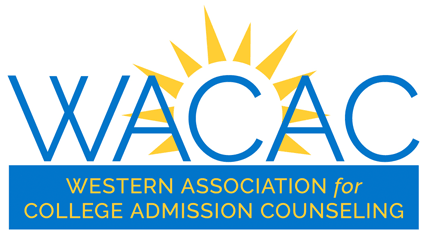By Curtis Morisaki
THE JOURNEY:
Dreaming of a glorious career working in the movies is why some people attend college in Los Angeles, “City of Angels.” For Kirk Brennan, Director of Undergraduate Admission at the University of Southern California (USC), that’s exactly what his intentions were after college.
Graduating from USC with a degree in cinema-television, Brennan dreamed of learning how to make movies that changed the world. While starting work on a graduate program, he took a position in the admissions office at USC to pay graduate school tuition.
“I was pleasantly surprised to learn that college admissions work allows you to change the world every day and is a little more regular than movie work,” said Brennan. He frequently reminds himself how fortunate he is to have found his dream job by taking that first admission position while in graduate school.
Years ago, Brennan thought that working in college admissions would be a temporary stop. About six years into working at USC, he wanted to continue working at his alma mater, so he sought out opportunities for growth.
Speaking with the Dean of Admission at the time, Joe Allen, Brennan started work as an associate director of admission with a primary focus on operations. Allen is the one who showed Brennan that college admission work is special and helps student plan their future. “He’s (Joe Allen) had quite a legacy of influence and he really illustrated to me how college admission does change that world and is not just bureaucracy.”
Brennan claims he has gotten to where he is today in his admission career through inertia and patience. He admittedly says he never envisioned himself sitting in his current role because he was satisfied with work behind the scenes on the operational side.
Since 2011, Brennan has welcomed the challenge of working as the Director of Admission at USC. Over time professionals find themselves in a routine with the same set of problems that aren’t as challenging as they used to be. “This is a new set of problems, like doing puzzles in the newspaper, where I skip the easy ones, but am pretty good at doing the diabolical ones, but not quite there yet.”
THE ROLE:
Many aspects of the work are rewarding for Brennan. He enjoys helping USC grow and is proud to be part of the institution. Students are part of the equation in making a great institution and Brennan believes there is no better feeling that making a student’s dream come true through this work and showing them how they can afford their education.
Though challenges are sometimes hard to admit because they can be seen as a sign of weakness or failure, Brennan shares a common one for all institutions. Finding the balance between institutional interests with the interest of students and families can be challenging. “Sometimes we have to make difficult decisions that don’t always keep students at the center,” said Brennan. Another challenge is turning away highly qualified students because of the competitive nature of college admissions.
Universities are the sources of solutions for the great problems in the world and that’s why Brennan works in higher education. “By bringing great students together to join great faculty we will come up with those solutions together and it’s exciting to be part of that process.”
The work in admissions is not done alone and Brennan is humbled by the staff he directs. He says people get behind the mission of the university and dedicate their time to making the school great. Managing staff is also stimulating because people push and challenge you to think hard and aren’t going to take orders without questioning them. “I feel frequently pushed to grow by my colleagues.”
ODDS & ENDS:
At the core, Brennan believes college admission work will not change much. There will always be change in the way early decision/early action program influences students, how college admission offices community with students and demographic changes in each incoming class.
Brennan says some are afraid of changes affecting the work we complete in college admissions, but student and parent dreams are the same around the globe. “We dream of a better life for our kids, solutions to great problems and to me those seem fundamental and unchanging.”
Technology has impacted how students apply to colleges, the timeframe in which decisions are made, how fast applications are processed, and more. Brennan recalls the days when application numbers were much lower than they are today and attributes the rise in volume to technology. Students can explore more and look at colleges beyond their local neighborhood and state.
Understanding the whole landscape of college admission is important to understanding the context of one’s individual institution. Brennan believes that much of the discussion on college admission focuses on “the voices at the table,” but there are many voices not at the table and these are places where a great deal of college access occurs. “I fear that those voices are not at the table and up-and-coming professionals should constantly keep in check how their views are skewed by their individual institution.”
Patience is Brennan’s key word for making it through each admission cycle. “I’m stunned at how each cycle is different and presents new challenges and opportunities each year.” Learning from colleagues within your office, WACAC and NACAC is good way to share knowledge and learn more about college admissions work. “The next generation (of admission professionals) should feel free to ask us questions that they have and understand what is happening in college admission outside of their view (institution).”

